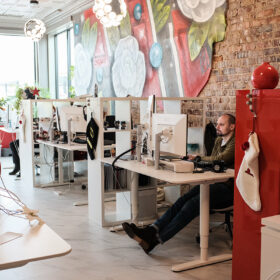Hybrid WorkingThe Best of Both Worlds
Here at cb{d}, we employ a hybrid work model. Most team members work at home Mondays and Fridays and are in the office Tuesdays through Thursdays. This type of split-week model is the most common hybrid work arrangement, but there are others. Some companies have different departments in the office on different days, or let employees choose where they will work from day to day.
Why should employers consider a hybrid work model? It’s what most remote-capable U.S. employees want. (Only 6% want to work in the office full-time.) That alone makes hybrid work a serious consideration for retention and recruitment.














